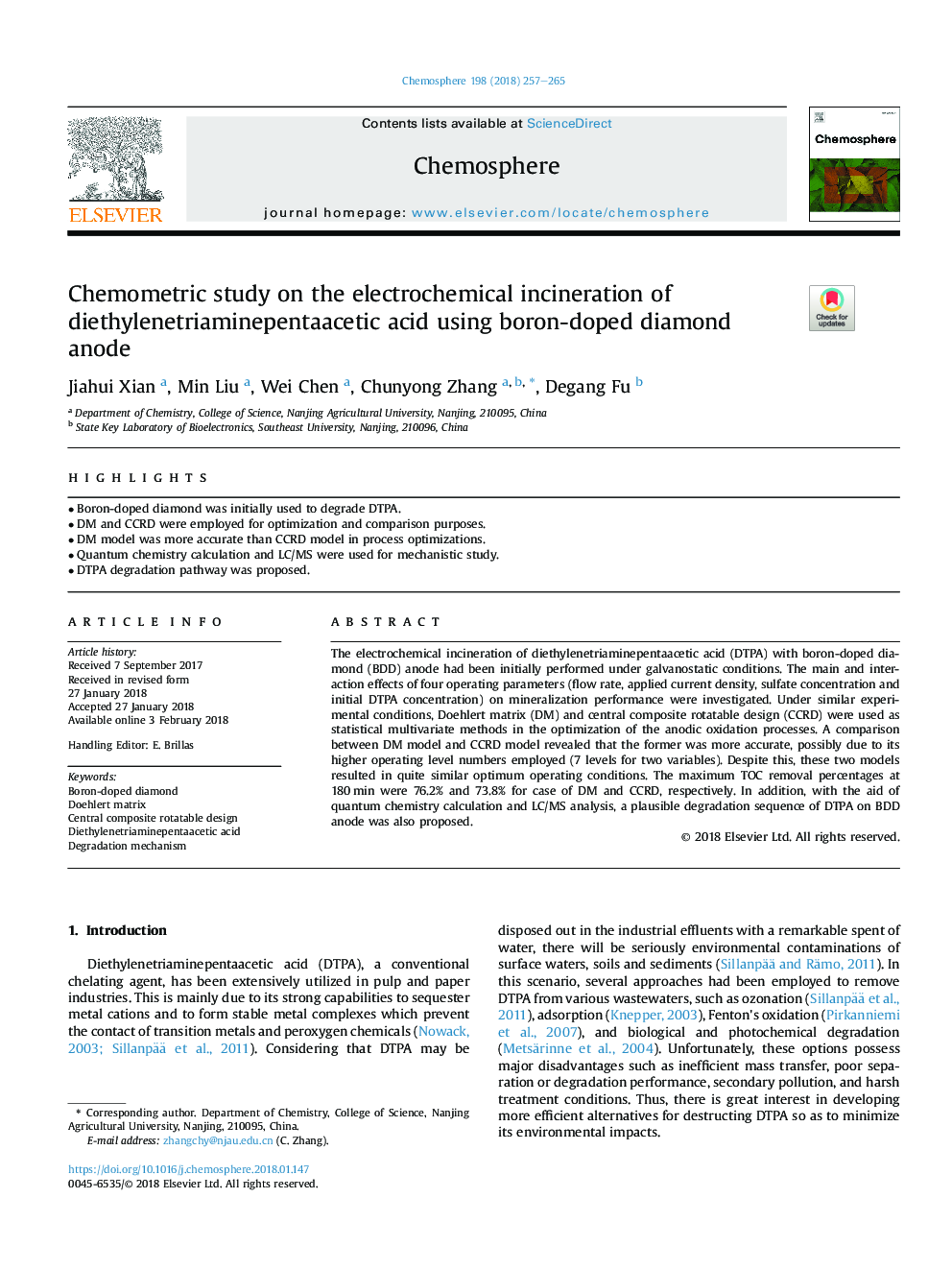| Article ID | Journal | Published Year | Pages | File Type |
|---|---|---|---|---|
| 8851937 | Chemosphere | 2018 | 9 Pages |
Abstract
The electrochemical incineration of diethylenetriaminepentaacetic acid (DTPA) with boron-doped diamond (BDD) anode had been initially performed under galvanostatic conditions. The main and interaction effects of four operating parameters (flow rate, applied current density, sulfate concentration and initial DTPA concentration) on mineralization performance were investigated. Under similar experimental conditions, Doehlert matrix (DM) and central composite rotatable design (CCRD) were used as statistical multivariate methods in the optimization of the anodic oxidation processes. A comparison between DM model and CCRD model revealed that the former was more accurate, possibly due to its higher operating level numbers employed (7 levels for two variables). Despite this, these two models resulted in quite similar optimum operating conditions. The maximum TOC removal percentages at 180â¯min were 76.2% and 73.8% for case of DM and CCRD, respectively. In addition, with the aid of quantum chemistry calculation and LC/MS analysis, a plausible degradation sequence of DTPA on BDD anode was also proposed.
Keywords
Related Topics
Life Sciences
Environmental Science
Environmental Chemistry
Authors
Jiahui Xian, Min Liu, Wei Chen, Chunyong Zhang, Degang Fu,
